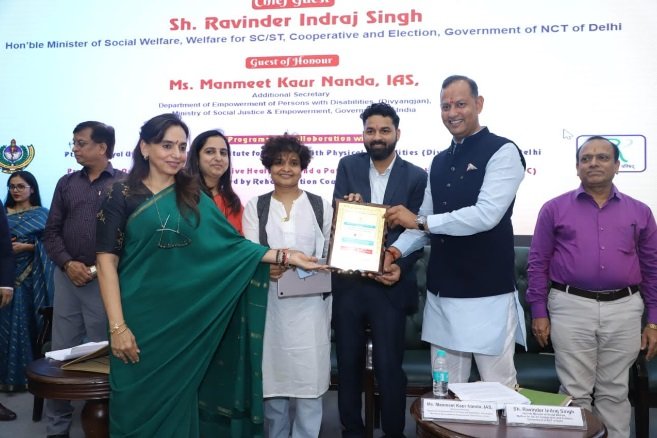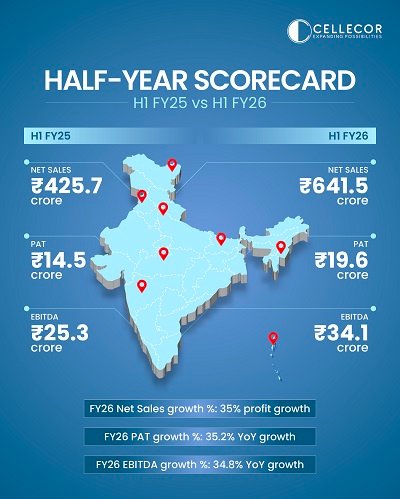In the 1949 film Dulari, India’s beloved playback artist Mohammed Rafi sang: “Suhani raat dhal chuki, na jaane tum kab aaoge” (The golden night has faded, who knows when you will arrive). While a salve for the pining heart might not have been found as yet, the artist Atul Dodiya has managed to recreate that golden night—the golden era of Hindi cinema (1945–65)—in his ongoing exhibition, “Radio Ceylon Paintings: Vol. I” (January 9–February 22), at Mumbai’s Chemould Prescott Road gallery.
On show are Dodiya’s portraits of 125 music composers, singers, lyricists, filmmakers, and actors who were crucial to the poetic and soulful films of that era, alongside paintings of a few movie stills. “Mohammed Rafi was a giant of a genius of the music industry then,” said Dodiya. Hence, this exhibition is inspired by and dedicated to Rafi on his recently concluded birth centenary year; he was born on December 24, 1924. “Rafi could sing bhajans, ghazals, qawwalis, and everything in between,” Dodiya said, adding: “He is my inspiration. He has taught me to try out different things and not stick to one medium or subject.”
Also Read | Reimagining the past: Inside India’s archive revolution
Freshly recovered from a bout of illness, Dodiya, 65, looked weak and his eyes were visibly tired as he interacted with the audience at Chemould Prescott on January 11. But as soon as he started talking about his works, his eyes sparkled.
The young audience lapped up his words. Chemould Prescott Road was the first stop on their gallery-hopping route across Fort, Kala Ghoda, and Colaba, where exhibitions had opened simultaneously for the annual Mumbai Gallery Weekend (January 9 to 12) event. They had gathered at the gallery for Dodiya, one of the superstars of contemporary Indian art, known for his versatile practice.
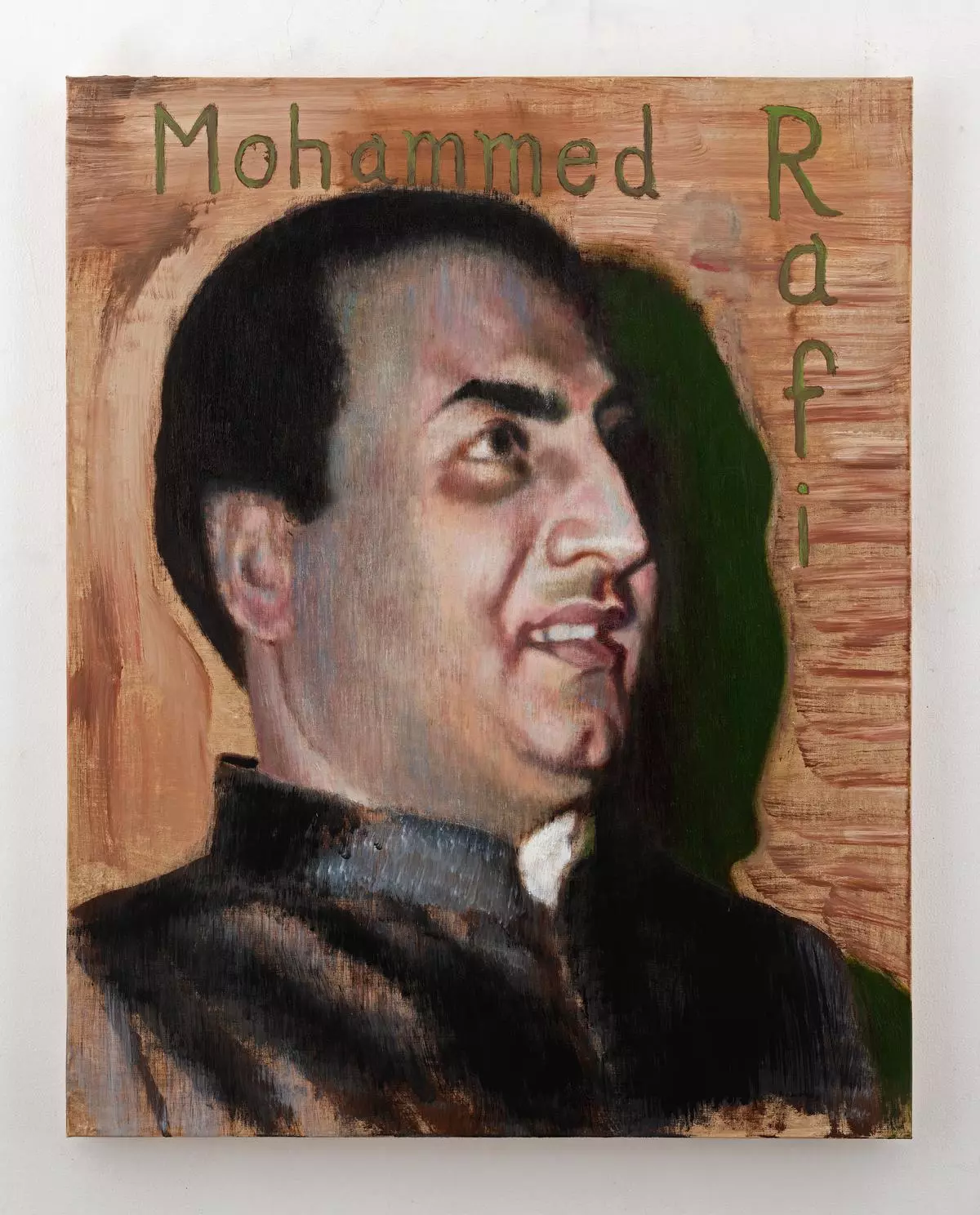
Portrait of Mohammed Rafi.
| Photo Credit:
Chemould Prescott Road
Dodiya’s works engage with politics, art history, and popular culture, drawing inspiration from folklore, cinema, and advertising. Sometimes, it is an installation inspired by the home of his forever muse Mahatma Gandhi, critiquing intolerance through symbols and objects (“Broken Branches”, 2003). At another time, it is a satirical self-portrait, mocking his engagement with Bollywood (The Bombay Buccaneer, 1994).
Love for Hindi cinema
The current show mostly features portraits in oil: the poet Sahir Ludhianvi, the actor and singer Suraiya, the music composers Shankar-Jaikishan, the actor Madhubala, and many others. Dodiya has made them look the way they appear in old newspapers, magazines, and posters: a little distorted, a little yellowed, yet full of character. A few are rendered with sharp lines while others have softer lines and strokes. Being an admirer of French impressionist painters, Dodiya has made the portraits in the impressionist style.
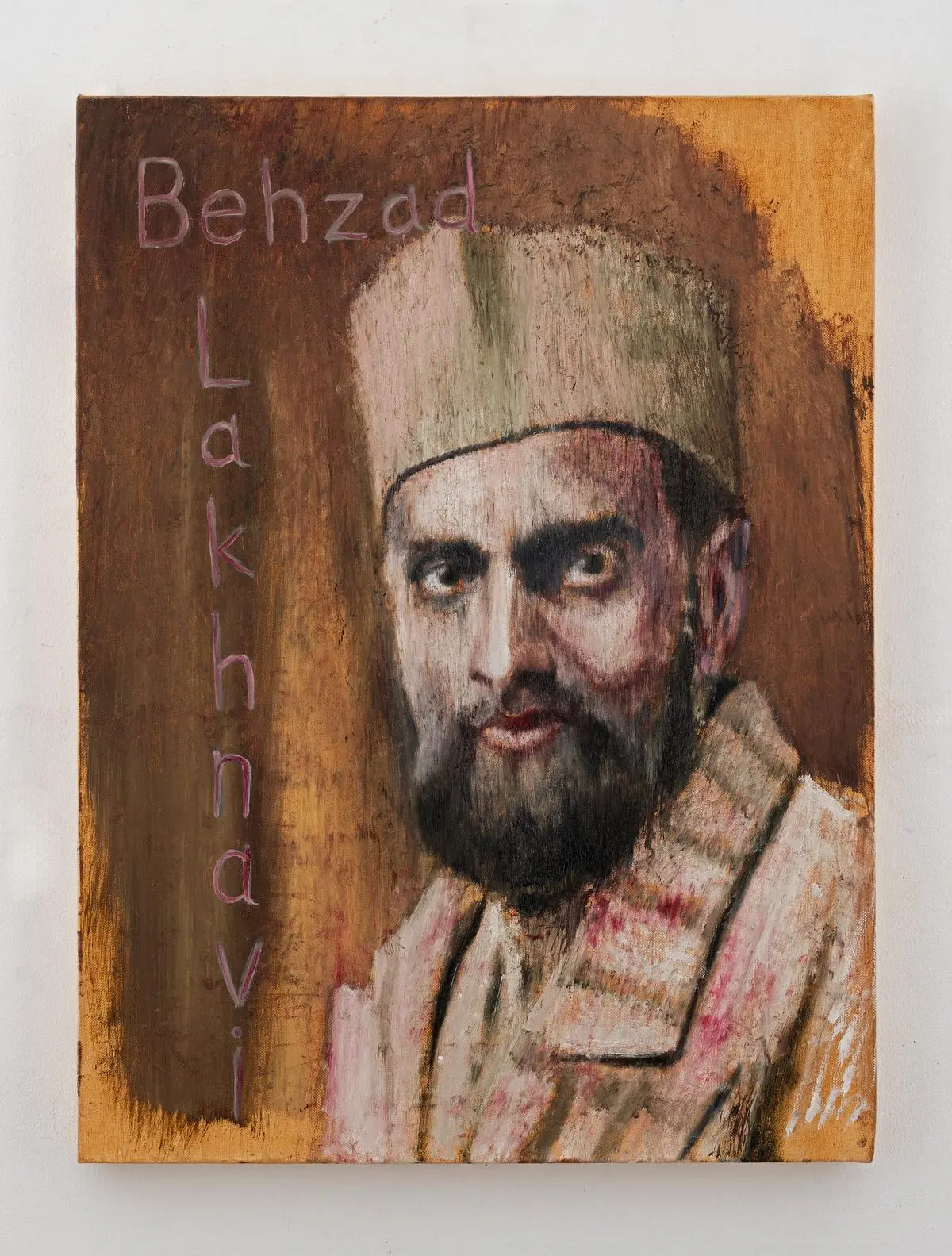
Portrait of poet and lyricist Behzad Lucknavi.
| Photo Credit:
Chemould Prescott Road
His subjects wear different expressions: Asha Bhosle looks coy; the composer Sajjad Hussain seems pensive; Shankar of the Shankar-Jaikishan duo flashes a wide smile. The work that struck me the most was a painting of a movie scene. Taken from the 1956 film Mem Sahib, it has Shammi Kapoor and Meena Kumari drinking tea from each other’s cups. Shammi Kapoor looks lovingly at Meena Kumari, who seems to blush. Dodiya brilliantly captures the romance of the scene, transporting the viewer to the moment of attraction.
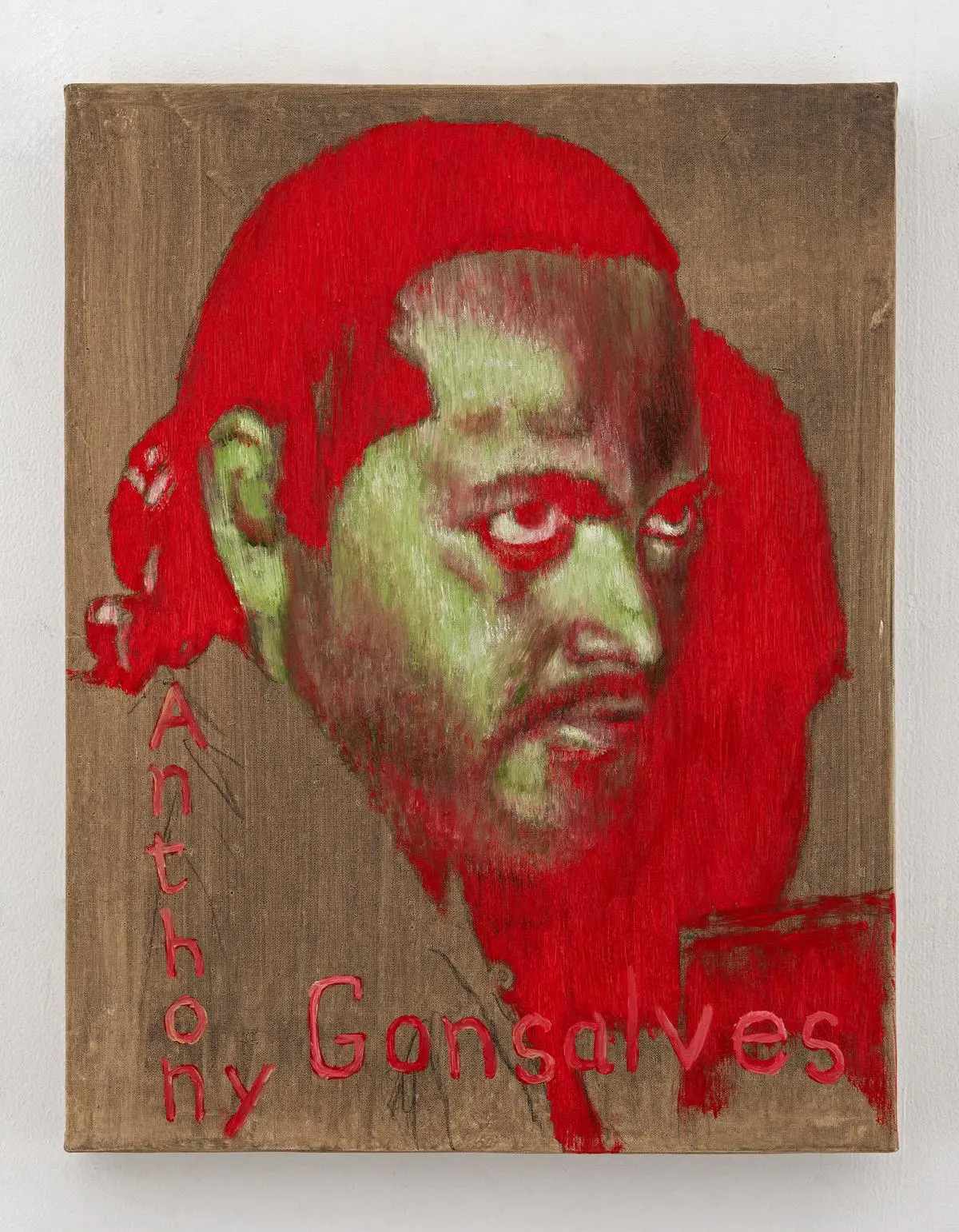
Portrait of music composer Anthony Prabhu Gonsalves.
| Photo Credit:
Chemould Prescott Road
In 2023, Dodiya exhibited 24 oil paintings of stills from Hindi movies in a show titled “Dr. Banerjee in Dr. Kulkarni’s Nursing Home and Other Paintings 2020-2022” (January 12–February 25) at Chemould Prescott. It featured movies such as Anand (1971), Padosan (1968), Mahanagar (1963), Anupama (1966), Awaara (1951), Kaagaz ke Phool (1959), Ittefaq (1969), and Kapurush (1965), among others. “Radio Ceylon Paintings: Vol. I”, in a way, is an extension of that exhibition and also proof of the artist’s love for and obsession with Hindi cinema.
Songs of yore
He made the portraits during the COVID-19 pandemic, painting one every day for a year. This was also when he rediscovered Radio Ceylon, a radio channel he grew up listening to, and which now has a YouTube channel. “The channel would play great Hindi songs then, in a much sought-after programme at a time when there was no television,” Dodiya said. He recalled how as a child he was told to listen to Radio Ceylon and BBC to improve his English-speaking skills. The Radio Ceylon frequency still plays old Hindi songs, some of which he had forgotten. “It all came back to me while listening to the songs during COVID,” Dodiya said.
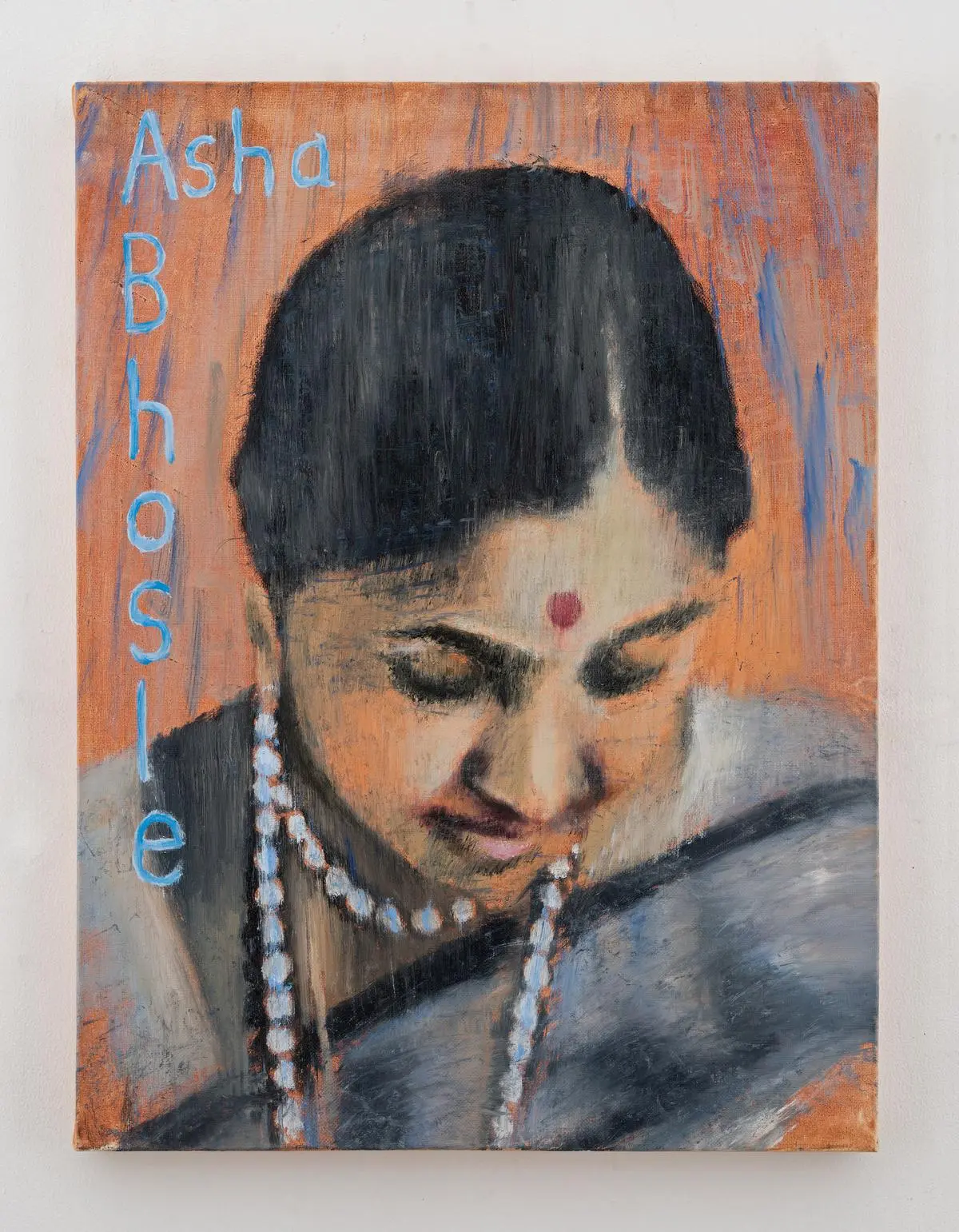
Portrait of Asha Bhosle.
| Photo Credit:
Chemould Prescott Road
Listening to his favourite tunes, the artist felt curious about their creators. He put their faces on canvases while reading about their lives. “It was sad for me to learn that many of them lived their last days in penury and neglect,” he said. In many ways, the show is an archive of forgotten artists, prompting the viewer to make their acquaintance and pay them homage.
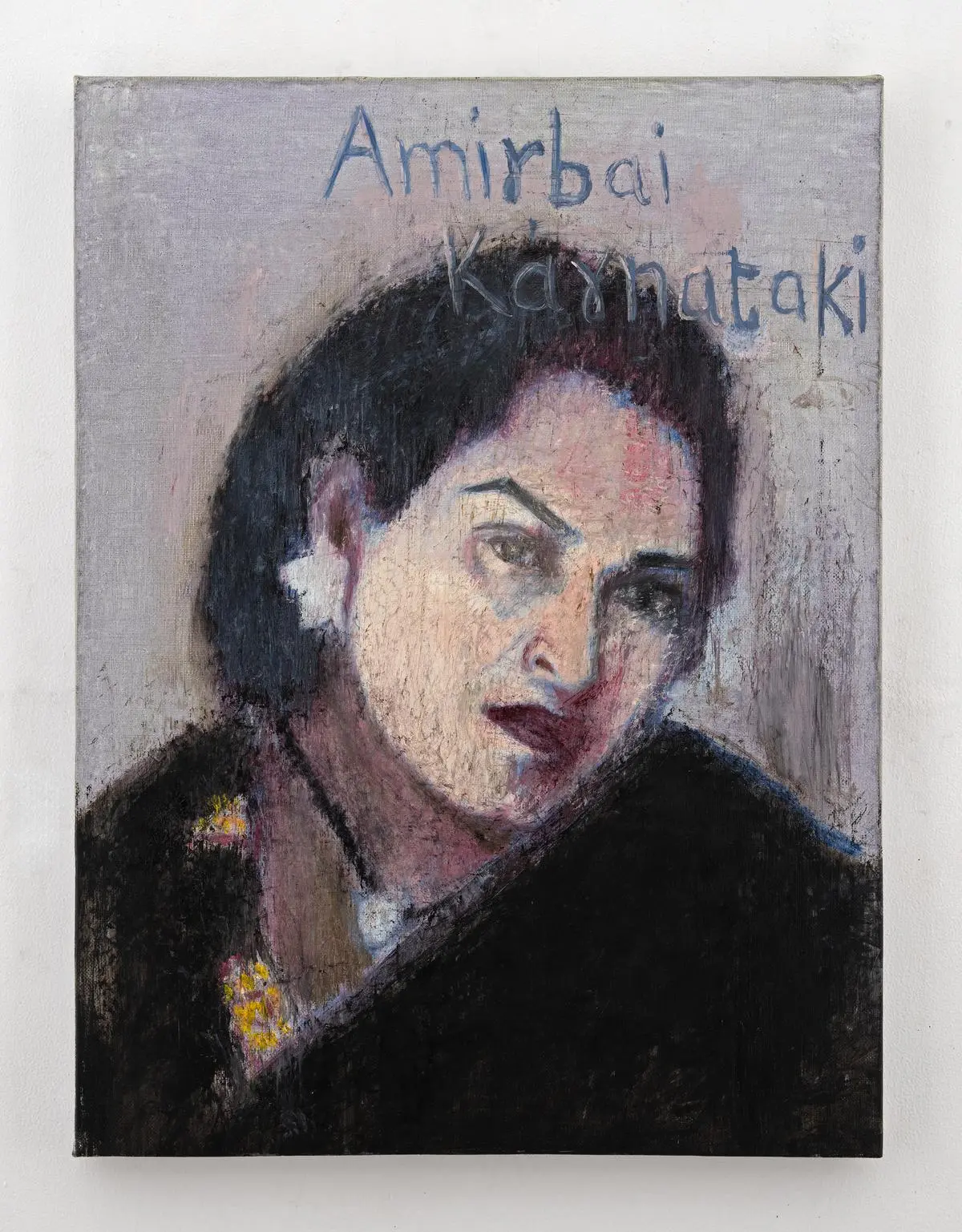
Portrait of actress and singer Amirbai Karnataki.
| Photo Credit:
Chemould Prescott Road
But Dodiya was not sure if the works would resonate with the audience today. “It’s my obsession and my passion, which doesn’t mean that others would relate to it,” Dodiya said. “But then, an artist always puts out what he wants to and that is how it must be.”
Back in time
It turns out that Dodiya’s passion is infectious. Chemould’s director, Shireen Gandhy, took the right decision in convincing Dodiya to exhibit these works rather than keep them to himself. At the walkthrough on January 11, viewers enthusiastically took pictures of the paintings and posed with them for selfies. I too made a mental note to look up some of Dodiya’s subjects on Google. Sahir Ludhianvi, who primarily wrote in Urdu and was famous as the love interest of the poet Amrita Pritam, was on top of my list. The actor Sudha Malhotra, now 88, visited the exhibition with her son to see her portrait. “She said she liked it, and that was a special moment,” said Dodiya.
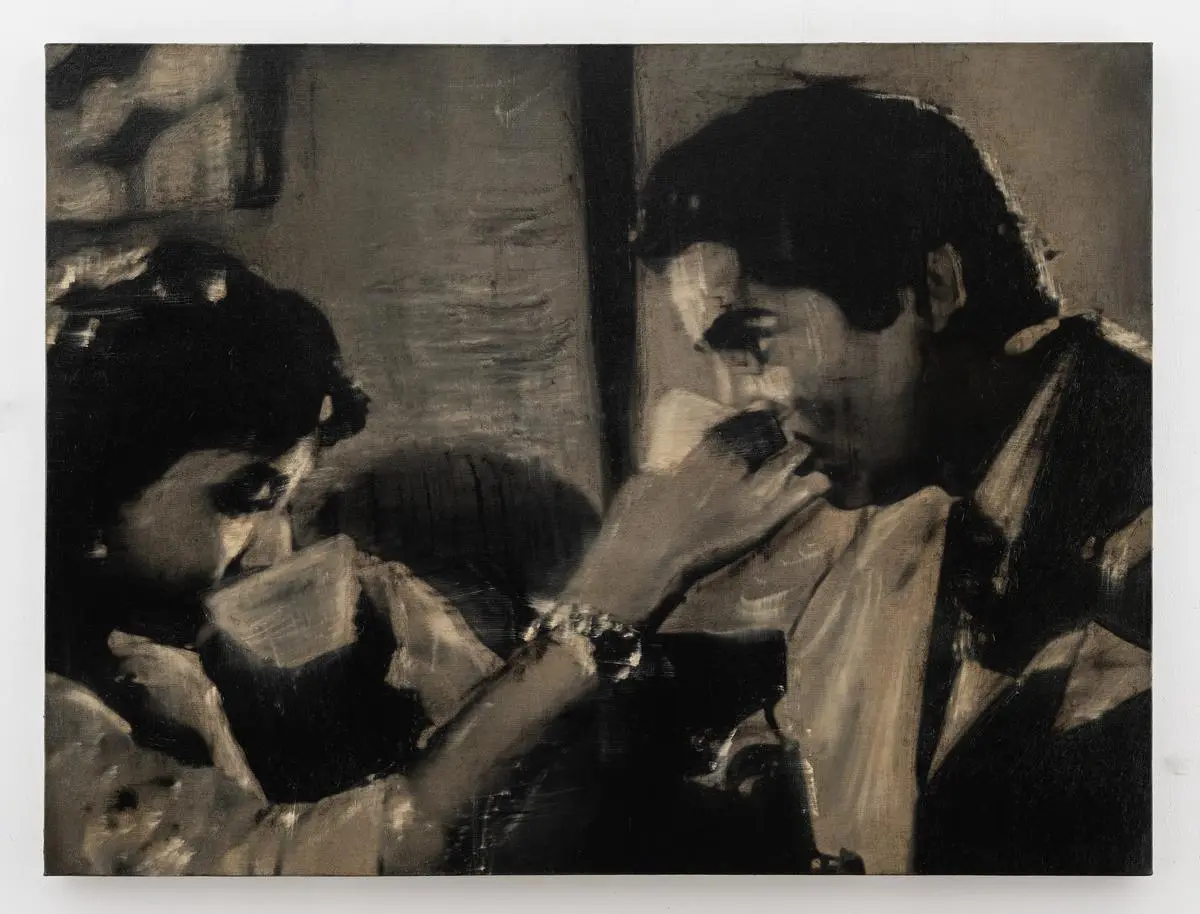
Meena Kumari and Shammi Kapoor in the 1956 movie Mem Sahib.
| Photo Credit:
Chemould Prescott Road
“He really takes you back in time,” said a viewer, walking past the white walls of the gallery painted with a thick brown line, reminiscent of school interiors. “That’s how the walls of my school, Gurukul Vidyalaya, in Ghatkopar [a Mumbai suburb] looked…,” said Dodiya. At the exhibition, the walls represent a lost time when these films and songs were made and when Dodiya devoured them.
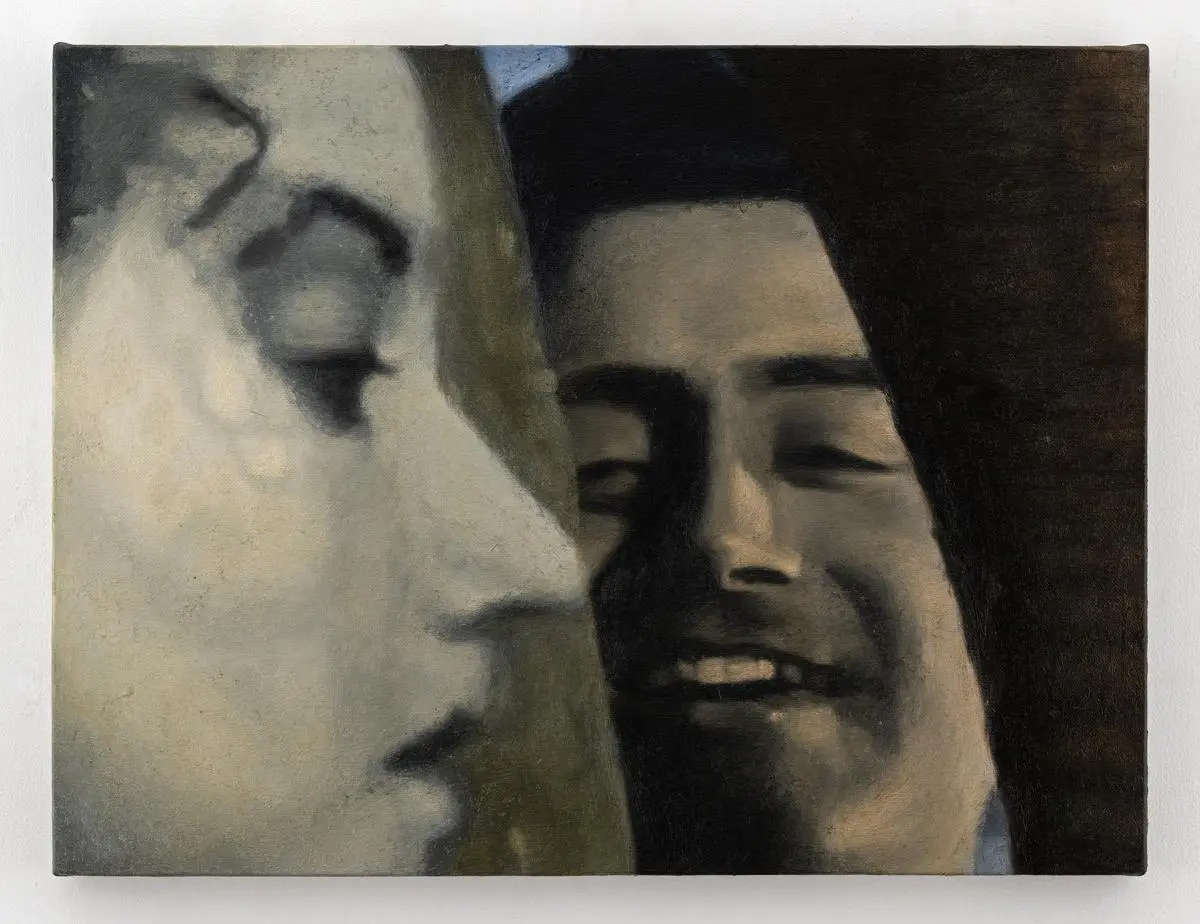
From the song, “Aankhon hi aankhon mein,” from the film, C.I.D. (1956), starring Dev Anand and Shakila. The song was sung by Mohammed Rafi and Geeta Dutt.
| Photo Credit:
Chemould Prescott Road
Dodiya reminisced that it was a time when Muslims were not “othered”. There are 40 artists with Muslim names in the exhibition. “They were a part of our daily lives, our consciousness, and look at what it’s come to now. We are constantly trying to separate them,” Dodiya said. But the reminder that such a time did exist gives reason to hope that it might just come back. Until it does, Dodiya’s paintings of the golden-era film personalities ask us to hold on to love, togetherness, music, and poetry.
Riddhi Doshi is an independent art, culture, lifestyle, and travel writer based in Mumbai.

